10+ SAMPLE Restaurant Partnership Contract
-

Restaurant Management Partnership Contract
download now -
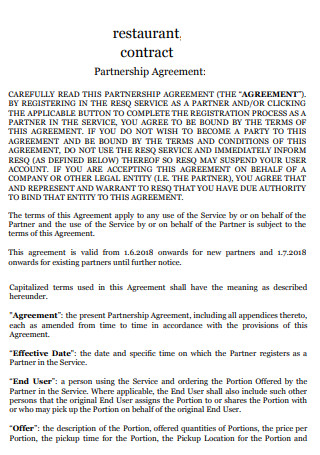
Restaurant Service Partnership Contract
download now -
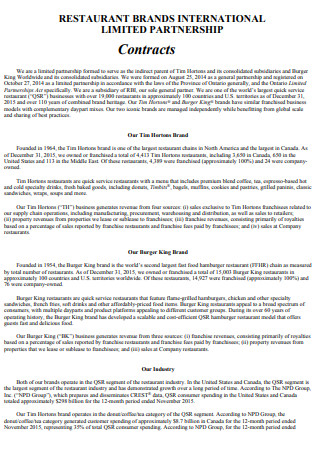
Restaurant Brand Partnership Contract
download now -
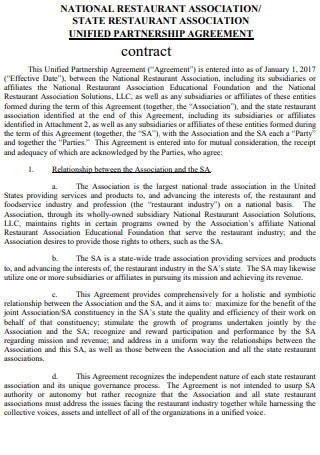
Restaurant Association Partnership Contract
download now -
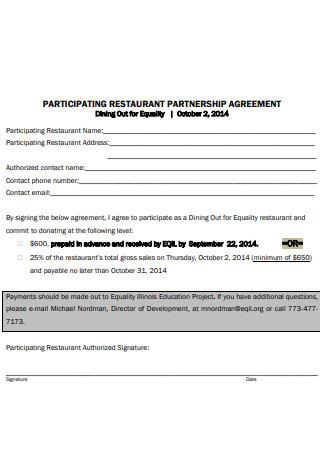
Restaurant Partnership Agreement Contract
download now -
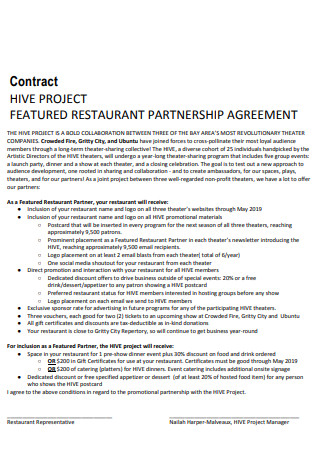
Restaurant Project Partnership Contract
download now -
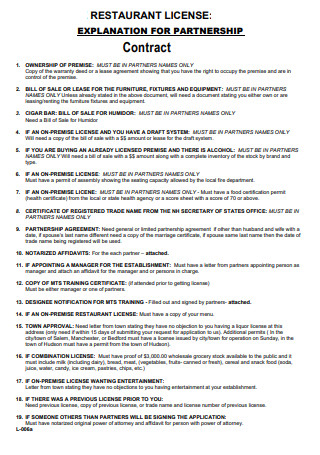
Restaurant License Partnership Contract
download now -

Restaurant Development Partnership Contract
download now -
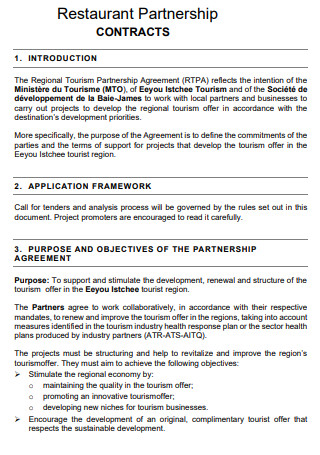
Sample Restaurant Partnership Contract
download now -
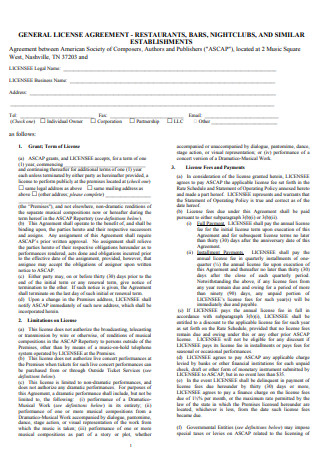
Restaurant Bar Partnership Contract
download now -
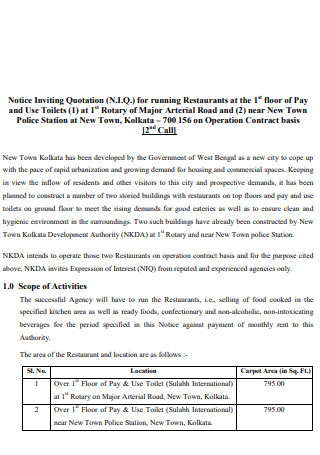
Basic Restaurant Partnership Contract
download now
FREE Restaurant Partnership Contract s to Download
10+ SAMPLE Restaurant Partnership Contract
What Is a Restaurant Partnership Contract?
Different Types of Restaurants
Things to Know About a Restaurant Partnership Contract
How to Make a Restaurant Partnership Contract
FAQs
What is a limited partnership?
What are the responsibilities of a silent partner?
What is the disadvantage of partnership?
What Is a Restaurant Partnership Contract?
A partnership contract is a legal document that specifies the partnership’s conditions and agreements. It is not always necessary to have a written partnership agreement. You can make a verbally binding contract just by agreeing to something during a business meeting but it is always best to have a physical document that both parties can refer to in the future. Partnership agreements are known by a variety of titles, including Restaurant Partnership Agreements and general partnership agreements. Writing one could be a challenge which is why you can make use of the restaurant partnership contract template provided for you in this article.
Different Types of Restaurants
The restaurant sector has suffered a huge shake-up since the pandemic, which allows different types of restaurants the opportunity to reassess their business strategies and react to changes in customer patterns. Although various types could be noticed, you have to be aware of which fits your ideal business partnership best. Thinking deliberately and answering certain big questions are required when honing in on concepts for the most successful sorts of restaurants. This kind of thought can also help you narrow down factors like your price range, staffing, and more so you can thoroughly discuss it with your partner.
Things to Know About a Restaurant Partnership Contract
Many aspiring restaurateurs form partnerships with individuals who can provide the necessary financial resources and commercial know-how to help them succeed. A handshake can cement a deal, but a legally enforceable contract is a much better approach to ensure that your business runs properly. That way everyone participating will have their contributions, expectations, duties, and risks clearly stated. Read this curated list so you would be more aware of what to include in the contract before sealing the deal with your partner.
How to Make a Restaurant Partnership Contract
Writing a Restaurant Business partnership contract is not easy especially if you have things you are prioritizing over such as the more relevant details regarding building a restaurant, the menu items, securing the ingredients, and so forth. This is why this article has prepared for you this guide so you can follow through it with ease and fewer worries. Additionally, you can check out the sample templates readily available in this article so you can have an already done format that you can edit with ease.
-
1. Title of the Partnership
One of the first things you must do is agree on a name for your partnership. You can use the last names of both parties involved in the contract signing, or you can adopt and register a crafted business name. If you choose a crafted name, you must make sure that the name isn’t already in use otherwise it could be confusing or could end up in legal dispute. Make sure the document you write reflects the type of partnership being formed. These can be used to state the type of partnership contract.
-
2. Contributions to the Partnership
Before the partnership begins, you and your partners must figure out the responsibilities and contributions between each of them. Specify in the document who will contribute cash, property, or services, as well as what ownership percentage each partner will have. Many potential businesses have failed due to disagreements over contributions. Outline managerial duties and terms of authority of each partner. If applicable, include each partner’s accounting obligations. In most cases, partner equity does not imply equal investment commitments from all business partners. Instead, partners can contribute equally to the organization and have equal Ownership rights, but they can contribute in several ways.
-
3. Add Clauses, Terms, and Conditions.
Clauses and provisions establish unique rules for specific situations. A dispute settlement clause is one such example. The dispute resolution clause establishes who has decision-making authority in the event of a disagreement and outlines the dispute-settlement process. Include Terms and conditions for terminating the relationship. For this step, you must specify the terms of both parties so that you don’t risk breaching confidential information.
-
4. Attach Buyout Options
In some cases, the original party involved in the partnership may not continue through a longer period. So partners need to have any buyout options that you can include in the document. Since some partners may want to acquire more of the original percentage of their ownership, knowing the possibility is important for future purposes. You should also include the method for adding new partners or the removal of original partners. So before a partner will consider leaving, they are aware of what will happen to their former share or how their responsibility can be filled with another partner.
-
5. Withdrawal or Death of a Partner
As previously mentioned in the former step, in some certain situations partners will be leaving the contract sooner than expected. The regulations for dealing with the departure of an owner are at least as significant as the rules for admitting new partners to the business. To deal with this possibility, you should include a suitable buyout scheme in your partnership agreement. This step goes hand-in-hand with the previous one as having an option for a buyout is also possible when a partner leaves the contract due to natural causes. You should also inform the interested or potential partner of the reason for the available position.
FAQs
What is a limited partnership?
Limited Partnerships are legal business entities that require state approval. They have at least one general partner who is responsible for the company and one or more limited partners who give financial support but do not run it. Limited partners put money into the company in exchange for a profit. They are not liable for the business’s debts and liabilities. When limited partners can partake in the profits but can’t lose more than they have invested, this type of silent partner limited liability is used. Prepare a limited partnership deed for this type of business partnership.
What are the responsibilities of a silent partner?
A silent partner offers capital to a company in exchange for a share of the company’s profits. A silent partner is not involved in the management of the company and cannot act on its behalf. The potential to receive investment returns with minimum involvement and being in a position of limited liability for any financial commitments of the business are the two main advantages of being a silent partner. When a Business Partnership is created, the many members contribute different amounts of capital and assets. The valuations of each partner’s first capital contributions are included in the partnership agreement.
What is the disadvantage of partnership?
One of the disadvantages of a partnership is that the partners’ liability for the business’s obligations is infinite. Each partner is jointly and severally accountable for the partnership’s obligations, which means that each partner is responsible for his or her portion of the debts as well as the total debts.
You have officially reached the end of the restaurant business partnership article which had shown you the steps to writing your contract. As well as provide you with additional lists that can help you out to know more about what goes into writing out a restaurant investment agreement. Of course, you don’t have to worry about the layout because there is also a restaurant partnership agreement template ready for you to use. What are you waiting for? Start writing your contract now!
